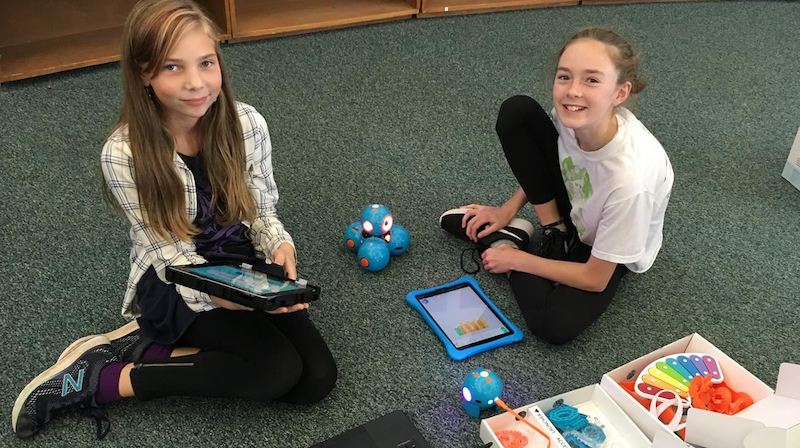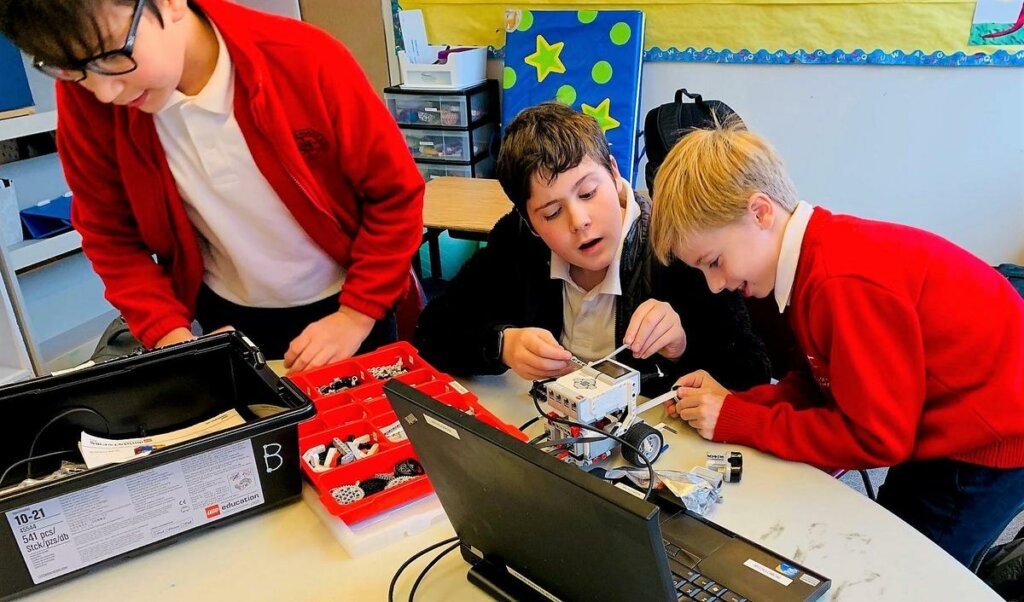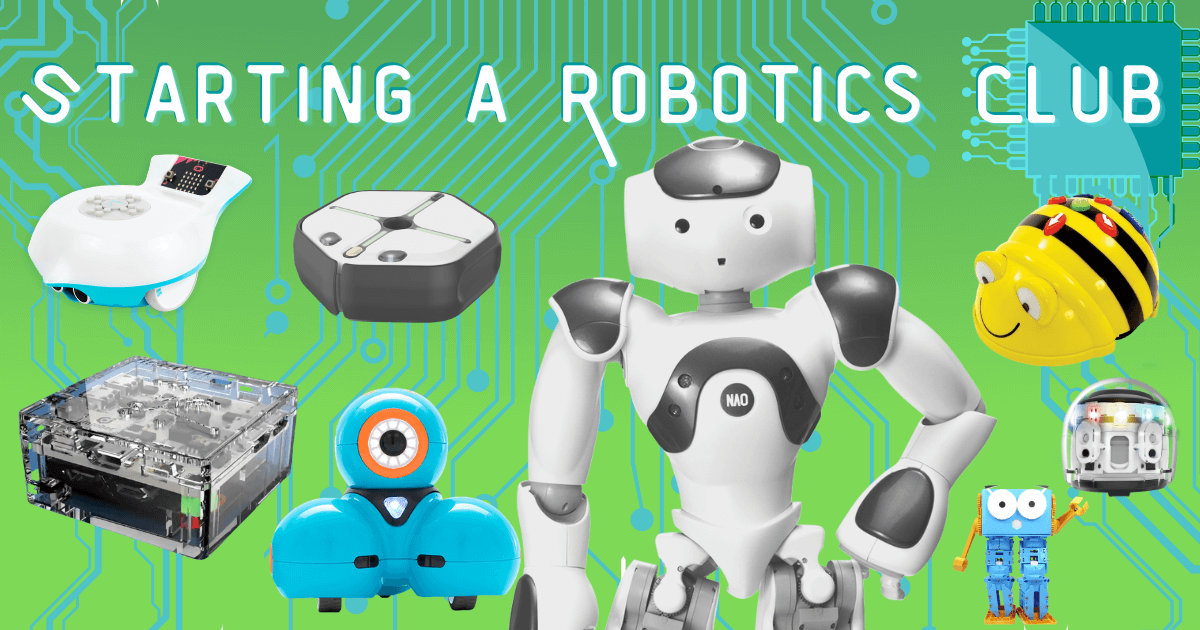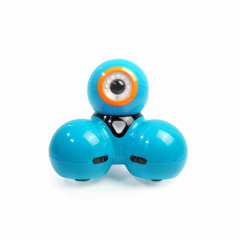| What is the best approach for starting a school robotics club? Here are some things to know: 1. Request administrator approval and seek out support. 2. Solidify some of the logistics—where, when, and for how long? 3. Do some research—others have had success. 4. Enlist fellow educators to join and learn with you. 5. Find some students to take part—start with just a few. 6. Gauge their ability levels and interests. 7. Brainstorm ideas for the best classroom robots. 8. Shop and integrate. |
Request Administrator Approval
Requesting approval for starting a robotics club could have a couple possible outcomes but administrators are often excited to offer students an additional opportunity to develop STEM skills. If you have budgetary or location questions, however, it might take a bit more convincing. Just try reiterating the fact that robotics experiences are great for helping students of all ages master crucial skills. This prospect, at least on paper, should be very appealing to any school leader. If they need more convincing, however, try to illustrate some of the specific values that robotics clubs can provide. These include STEM experiences tailored to coding for beginners, allowing them to work together, and helping them see how STEM ties in to everyday life.

Work Out the Logistics
Once you get approval for the robotics club, the next logical thing you might want to do is jump right in. It’s often beneficial, however, to take a bit of time to iron some things out. First and foremost, you'll want to be sure you have a room to meet. You’ll also need to figure out how often you can meet—monthly, weekly, or maybe even two or three times per week. Then, you’ll need to figure out how long the meetings should be and on which days. It seems super simple but routines help create consistency and ultimately allow more students to participate. For example, do you want to introduce Scratch robotics to students, have them try strictly digital platforms, or are they ready to explore text languages, like JavaScript or Python?
Doing Some Robotics Club Research
Once the schedule is at least somewhat solidified, teachers need to figure out the kinds of robotics tools they'll use. They will often weigh their experience levels with using robotics and coding technologies and, one way or another, consider their budget. Fortunately, there are educators in other schools who may know exactly how to start a robotics club or utilize a robotics club curriculum, so you may find lots of people who could help you a lot. A simple Google search for setting up a school robotics club will also yield a bunch of helpful results. Plus, taking advantage of social networking websites, like Twitter, is also a fantastic way for teachers to find what they're looking for from educators who have done this before.
Enlist Some Support
Just as administrators will probably be excited about creating a robotics club, fellow teachers probably will be too. And, it certainly helps if the leader of the club has some support from other educators. This doesn’t need to require any real expertise with robotics, either—just try to find one or two teachers who have some extra time to help facilitate meetings and keep kids on task while they’re there. Plus, it's an opportunity to introduce robotics to other teachers who may want to try it in their own teaching.
Finding Some Students for the Robotics Club
It might take a bit of time for a robotics club to gain steam but you have to start somewhere. Most school clubs start with only a handful of members (3-5 is fine) and then grow from there. Also, there are plenty of kids who might not realize they’re interested in robotics or what they can learn. They might need to hear this from a friend or another teacher and then, hopefully, you can use word of mouth to spread additional buzz about this chance to learn in the robotics club.

Gauge Their Strengths
After you round up some students, it's good to hold an initial meeting and learn about their experience with robotics. If they’re brand-new to robotics, this could affect which robotics kits you'll purchase, which goes for those with experience, too. Some robotics tools are specifically for beginners while there are, of course, others for kids who have some experience. If they’re on the younger side, for example, maybe trying some robots that don’t require assembly are ideal. Or, perhaps, if you know kids won’t have access to tablets or computers during the robotics club meetings, you could plan to purchase some robots students can use without a screen.
Brainstorm Ideas for the Robotics Club
Once you get a better idea of the students’ strengths and interests, you can do more detailed research on the robotics tools you’ll be using with them. There are tons of options for educational robots and the flashy robot from the big brands isn’t always best. First and foremost, it’s about creating the learning experiences that students want and those that are best for them. It’s also about staying in line with your school budget, so having three or four ideas that fit within each of these areas is a real good approach to take. Fortunately, there are various resources, like our coding and robotics table to help with these questions.
Shop and Integrate
Finally, it’s time to use what you’ve learned about your students, space, and budget up until this point and (with administrator approval) obtain some of the robotics products you'll want to use. To make your journey as simple as possible, our store includes many of the best robotics tools for STEM education. Depending on what you need, how much, and the budget, we can provide everything for getting school robotics clubs started. Whether you're working with elementary students or seasoned programmers from the high school grades, robotics education is for everyone. Follow us on Twitter and Instagram for more.
| Contact the Eduporium team at any time for guidance on starting a school robotics club. |





Thanks!
I intend to start a Robotics Club for grades 6 - 8 in our Elementary Catholic School. Would appreciate it very much if you could offer guidance and product suggestions to design the right space for our students. Looking forward to hearing from you at your earliest.
Tanks,
Shane
I intend to start a Robotics Club for grades 6 - 8 in our Elementary School in Nigeria. Would appreciate it very much if you could offer guidance and product suggestions to design the right space for our students. Looking forward to hearing from you at your earliest.
Thank,
Thx
Kara